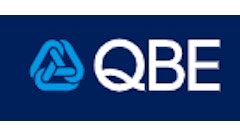By Daniel Burrus
The new frontier of Web 2.0 is not just about informing your customers; it's about communicating with them. Today's Web 2.0 tools, such as blogs, Twitter, Facebook, LinkedIn, and the many other social media options, are all about customer engagement.
When you send your prospects or clients an email, a mailer, or a newsletter, or when you place a TV, radio, or print ad, you're informing your readers about something. Those are information age tools that still have a purpose. However, social media is about the communication age. You're attempting to create a dialogue, trying to get engagement, and hoping to elicit a response. So it's not just about talking; it's about listening. Ultimately, social media is not about the media. It's about the social -- about trying to get people talking about something important to them and to your business.
What's Your Focus?
In order to make the best business use of social media, your organization needs to pinpoint the specific message you want to put out so that all employees have a guide to follow -- so they know what direction their messages should take and how they should focus their posts. In other words, is your company's focus to increase customer service? To enhance awareness of your products or services? To boost your brand recognition? Each of these things would have a different consistent message for your employees to focus on.
For example, one insurance company uses Twitter and Facebook to let people know all the philanthropic things they are doing for the community. All the posts are about events they're sponsoring and contributions they're making. Employees know that they should post information about personal things they're doing for the community, such as volunteering at the local animal shelter or helping out with Habitat for Humanity. With a clear guideline that the social media effort is to increase philanthropic awareness, it's easy for employees to know the kinds of things they should be doing on social media sites. They have a clear focus and a unified purpose.
Another company in the retail industry uses social media to improve customer service. All their posts highlight things they're doing internally to improve the customer experience, what they're doing online to make shopping easier, and how they're handling phone inquiries to deliver a memorable shopping experience. They also regularly ask customers how they'd like the company to improve customer service. With that as the key message, all the company's employees are focused on problem solving and on making the customers happy.
Therefore, a good social media strategy and employee guidelines are far more than a list of good and bad words or topics. Instead, they need to focus on the core message your company wants to portray and then determine the best ways to spread that core message. That's why upper management needs to take the time to determine the core message and share it with all employees.
Creating the Guidelines
Creating social media guidelines for your company does not have to be difficult. Once you get clear on the core message you want to send out and the dialogue you want them to engage with, use the following tips to create guidelines that your staff can use to shape their posts around the strategy. (Note: the following suggestions are general in nature. Please adhere to your state's HR laws and seek legal counsel as needed.)
- Build trust. Your employees should use their posts to build a reputation of trust among clients, media, and the public. When they are reaching out to others on social media sites, they should take every opportunity to build a reputation of trust and to establish themselves as a credible and transparent representative of the company.
- Transparency. When participating in any online community, your employees should disclose their identity and affiliation with the organization, clients, and professional and/or personal interest. When posting to a blog, they should always use their real name, not an alias.
- Be direct. When creating posts and content, your employees should be direct, informative, and brief. They should never use a client's name in a posting unless they have written permission to do so.
- Give due credit. If your employees post copyrighted materials, they should identify the original source. This includes sources for direct or paraphrased quotes, photos, videos, and anything else they did not originally create.
- Self-edit. Your employees should always evaluate their posting's accuracy and truthfulness. Before posting any online material, they need to ensure that the material is accurate, truthful, and without factual error. This includes doing a spell and grammar check on everything. Remember, content never disappears entirely once it's been posted. Should your employees find an error, have them correct it promptly. Since transparency is key, have them admit the mistake, apologize if necessary, correct it, and then and move on.
- Responsibility. Make sure employees know that they are responsible for what they post. Negative or questionable posts will not be tolerated. Additionally, while what they do on their own personal pages during personal time is their business, what they publish on those sites should not be attributed to the company and should not appear as endorsements from the company. If they choose to list their employer on a personal social network, then they must regard all communication on that network as they would in a professional network. Online lives are ultimately linked.
- Be professional. When posting comments, employees should refrain from writing about controversial or potentially inflammatory subjects, including politics, sex, religion or any other non-business related subjects. The tone of their comments should be respectful and informative, never condescending or "loud." Additionally, they should avoid personal attacks, online fights, and hostile communications. If a blogger or any other online influencer posts a statement with which your company disagrees, your employees can voice their opinion, but not escalate the conversation to a heated argument. Instruct them on how to write reasonably, factually, and with good humor.
- Privacy. Employees should never disclose proprietary or confidential information. This includes product releases, service updates, and employee information not made public yet.
- Obey the rules. All employees should follow local, state, or federal laws and regulations; the company's internal rules (typically found in the employee handbook); as well as the rules established by each social networking venue. Ultimately their online activities will be a reflection on the company.
Propel Your Message Forward
Today's Web 2.0 tools are great for business building, provided that your employees know how to use them for the company's ultimate benefit. Therefore, determine why your company is using social media sites, and then let that purpose be known throughout the entire organization. Additionally, implement clear social media guidelines that employees can follow, and you'll have the people, processes, and tools you need to further your company's mission. Ultimately, when employees know how they are supposed to use today's Web 2.0 tools, they can do so with focus and purpose, leading the organization confidently into the communication age.
About the Author:
Dan Burrus is considered one of the world's leading technology forecasters and strategists. He is the founder and CEO of Burrus Research, a research and consulting firm that monitors global advancements in technology driven trends to help clients better understand how technological, social and business forces are converging to create enormous, untapped opportunities. Dan has developed the first cell phone business application that allows the user to generate a business plan; the "Competitive Advantage Business Strategy Builder." For more information, please visit www.burrus.com.



















